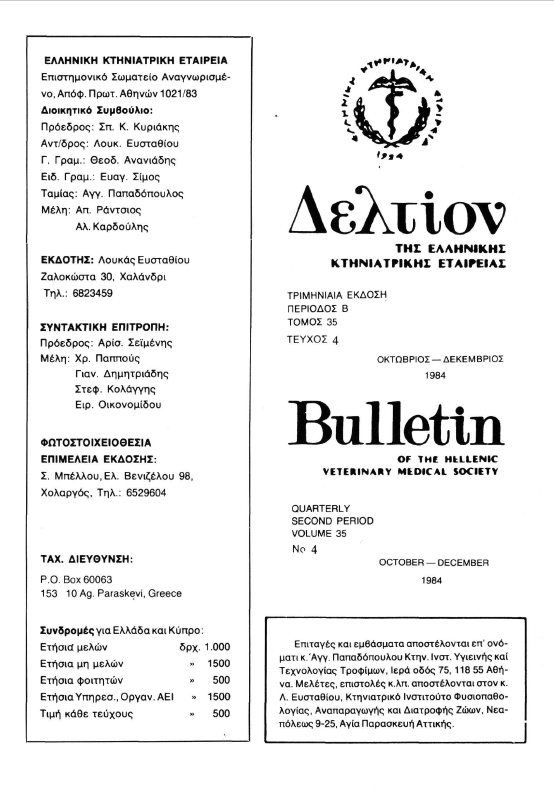An improved cervical mucus penetration test
Abstract
A simple and rapid procedure for following the migration of spermatozoa in bovine cervical mucus, incorporating some of the advantages of the «coverslip» and «capillary tube» methods, is described. The method measures reproducibly the following parameters: penetration depth, density, degree and duration of motility, and it permits, at the same time, a morphological examination of the spermatozoa. Using this method it was found that at 37°C bovine spermatozoa migrate in the cervical mucus of the oestrus cow at a constant rate, with a mean velocity of 58.0 ± 1.25μΑεο. The sperm migration rate at 30 C, and even more so at 37°C, was higher than at 22°C. There was a good correlation between velocity registered after 5,10 and 15 min. The coefficient of variation ranged from 2.7 to 21.9; higher values were recorded in samples with low rate of sperm penetration. Individual variability between samples of semen and cervical mucus was evident. Freezing and storing of cervical mucus at -30' C for one month did not alter the results of the penetration test. Dilution of semen of good motility to 30 X 107ml did not affect the readings.
Article Details
- How to Cite
-
ΚΑΡΑΓΙΑΝΝΙΔΗΣ Α. Κ. (2019). An improved cervical mucus penetration test. Journal of the Hellenic Veterinary Medical Society, 34(3), 244–253. https://doi.org/10.12681/jhvms.21602
- Issue
- Vol. 34 No. 3 (1983)
- Section
- Articles

This work is licensed under a Creative Commons Attribution-NonCommercial 4.0 International License.
Authors who publish with this journal agree to the following terms:
· Authors retain copyright and grant the journal right of first publication with the work simultaneously licensed under a Creative Commons Attribution Non-Commercial License that allows others to share the work with an acknowledgement of the work's authorship and initial publication in this journal.
· Authors are able to enter into separate, additional contractual arrangements for the non-exclusive distribution of the journal's published version of the work (e.g. post it to an institutional repository or publish it in a book), with an acknowledgement of its initial publication in this journal.
· Authors are permitted and encouraged to post their work online (preferably in institutional repositories or on their website) prior to and during the submission process, as it can lead to productive exchanges, as well as earlier and greater citation of published work.




